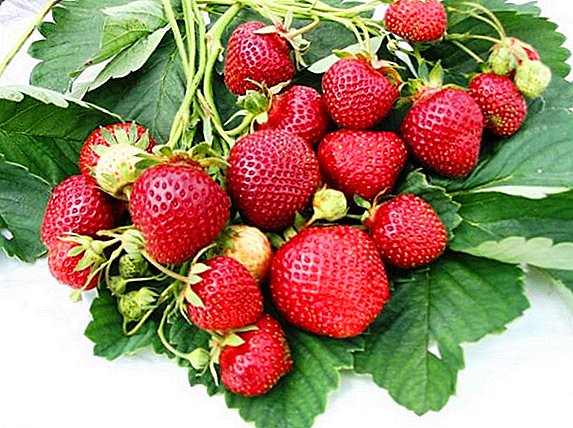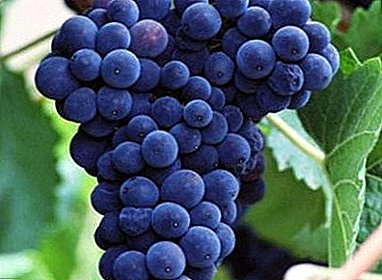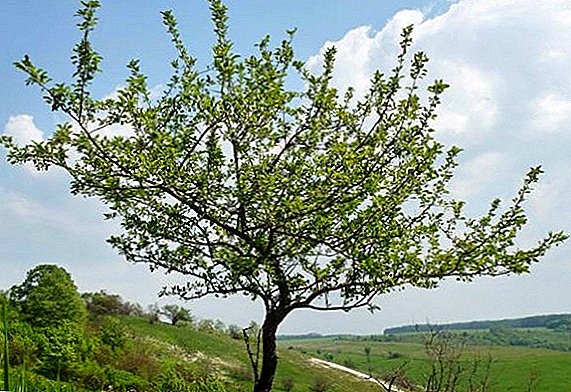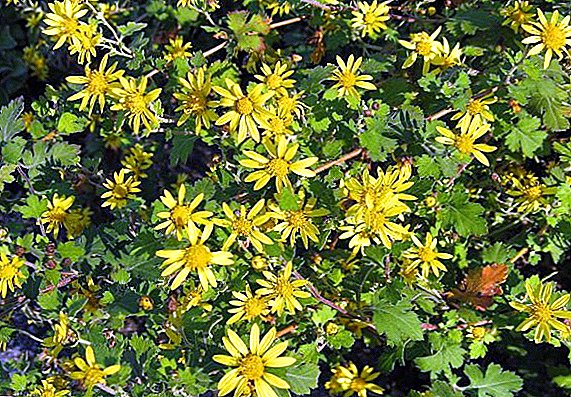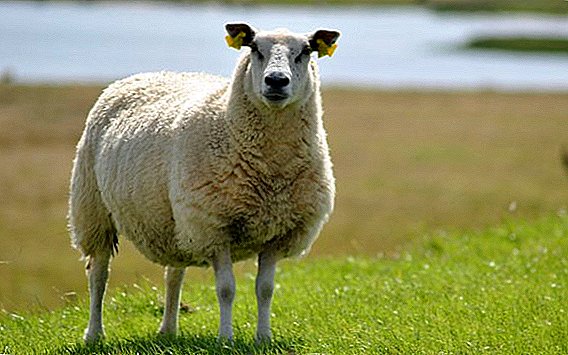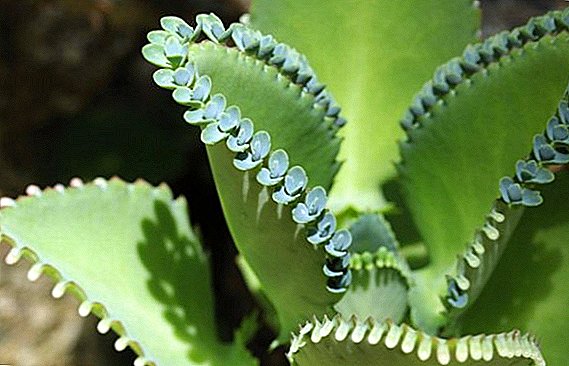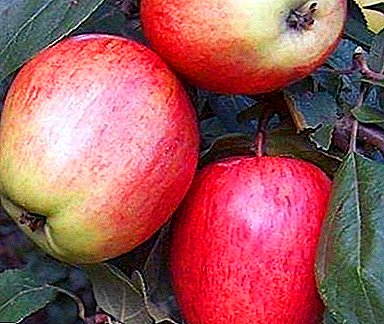
The Scala apple variety yields delicious fruits with a high content of ascorbic acid.
Apples possess exceptional commodity qualities and are very popular among consumers.
If you were looking for information on the Scala apple variety - description, photo, selection history, resistance to diseases and pests - then you came to the right place.
What kind is it?
Apple Scala refers to the autumn varieties of table destination. It is characterized by high yield., winter hardiness and scab immunity. The preservation of fruits on average up to three months, however, depends on the proper storage of apples:
- required optimum temperature - from -2 ° С to + 1 ° С;
- storage in wooden boxes or containers;
- relative humidity 90-95%;
- sizing fruit by size and sorting apples.
The Scala apple is not capable of self-pollination, it comes from the pollen of apple flowers of another variety.
Ideally, plant lanes of two varieties at a distance of five meters from one another.
Description of the variety Scala
The appearance of the apple characterized by medium growth, thick green light crown and medium-sized greenish yellow fruits. Below you can see a photo of an apple of the Scala variety and read a more detailed description of it.
 Low-growing, standard, medium in height, with a luxurious, not very dense crown.
Low-growing, standard, medium in height, with a luxurious, not very dense crown.
The branches are powerful, with respect to the trunk are located at an acute angle, gray. The bark is brown with a gray tinge, scaly. The shoots are well pubescent, medium-sized, have a green-brown color.
Fruiting mixed type. Medium-sized leaf with noticeable nerve, oblong shape with narrowed end, light green color. The surface of the sheet is glossy. Inflorescence pink with a free arrangement of petals.
Fruits of the variety Scala are large, slightly elongated. On the tree grow apples of approximately the same size. The average weight of an apple is 250 grams. With proper care, the mass of the fetus can reach and 320 grams. The shape of the apple is correct, symmetrical. The ribs are mild.
The skin is glossy, not thick without wax coating, dry. An apple without rust. The color of the fruit is greenish yellow with a red topcoat. The flesh is creamy-white, granular consistency, juicy and moderately dense. Taste sweet and sourIt has a pleasant but mild apple flavor. Organoleptic evaluation of the fruit of the variety Scala - 4.3.
A photo


Chemical composition:
- Sahara - about 12%;
- Dry Islands - about 15%;
- Ascorbic to-that - up to 30 mg in 100 g;
- R-active islands - 200 mg per 100 g
Breeding history
The apple tree variety Scala was born thanks to breeder Savelyev N.I. Received at the All-Russian Research Institute of Genetics and Breeding of Fruit Crops named after I. Michurin, by crossing varieties - Bessmyanka and Prima.
Distribution region
Apple-tree Scala is zoned in the region in which it was selected, is widespread in the Tambov region. However, the variety is well adapted in other regions. If the climatic conditions are not sufficiently suitable, it is important to ensure proper care, and above all, planting a tree.
Yield
 The Scala apple variety begins to bear fruit in the fifth or sixth year after planting.
The Scala apple variety begins to bear fruit in the fifth or sixth year after planting.
Sometimes it happens much later - by 7-8 years.
Fruit ripening falls in mid-September.
Consumer period lasts from late September to mid-December..
Regular yieldhigh
Planting and care
The yield and the size of the apple fruits of the variety Scala directly depend on the care. When planting a tree using classic fertilizer. Caring for an apple tree does not require much effort.
In order for the tree to grow strong, healthy and beautiful, the first thing that is needed is to choose the right sapling. It should be:
- with a developed root system;
- purchased in the zone with the same climatic conditions;
- young, then he quickly adapts to the soil in the area where he is grown.
Apple trees are usually planted in three seasons:
- autumn;
- summer;
- spring.
When choosing seedlings with an open root system it is better to choose the spring period for planting.
After purchasing seedlings it is very important to choose the right place for planting an apple tree:
- sunny territory;
- lack of wind;
- areas for planting should be well drained;
- soil is porous;
- it is recommended to use loamy or sandy soil;
- avoid places where groundwater is located close to the surface;
- properly prepare the landing hole.
The most important point in the landing process is the preparation of landing holes.
Since the Scala variety is a medium-growth tree, it is necessary to prepare pits measuring 70 x 60 cm, at a distance of three meters from each other.
The upper layer of the excavated earth is mixed with the lower layer and the following fertilizers are introduced:

- 18–20 kg of horse manure;
- 250 grams of wood ash;
- 250 g of superphosphate;
- 100 grams of potassium sulfate.
The pit is filled with a mixture of earth with fertilizer for 2/3. From above they pour fertile soil without fertilizers. Preparation of the landing pit is completed, carefully plant a seedling and tie it up to a wooden peg with a figure eight.
Tied to a peg we hold an apple tree for two years. The next year after planting, in the spring, it is important to form the deciduous crown of an apple tree. IMPORTANT Pruning is done in order to form the crown and direct the tree to properly use its strength.
The first couple of years it is necessary to form a crown on a sparse-tiered scheme: at the beginning of spring, cut only branches at a sharp angle, tie up others to maintain a horizontal direction.
It is necessary to trim the ends of each branch. It is desirable for the first four to five years not to give the apple fruit to form (it is necessary to pick 80-100% of the flowers). In the first year in April, trees should be irrigated with mixtures that protect against pests. This procedure should be performed twice:
- when buds began to swell on branches;
- before blooming buds.
Further apple does not need any special fertilizer. Basic care during the first five years after planting:

- tying trees to protect against rodents and hares (material - parchment, lapnik);
- mulching with humus pristvolnyh circles;
- hilling ground to a height of twenty centimeters.
Mandatory weekly irrigation during the dry season.
Diseases and pests
Scala trees are characterized by high resistance to various diseases. The variety possesses the Vf gene, which determines the immunity of the variety against scab. Apple trees often suffer from the following diseases:
- fruit rot;
- bitter pimples.
 Fruit Rot - A disease of the fungal type, which penetrates into the middle of the fetus through cracks and wounds created earlier by animals, hail or any other way.
Fruit Rot - A disease of the fungal type, which penetrates into the middle of the fetus through cracks and wounds created earlier by animals, hail or any other way.
The first sign is the appearance of a brown spot on the skin of the apple, which will grow until the apple is completely rotten.
Bitter pimples most often develops due to an insufficient amount of calcium in the soil, excessive doses of nitrogen fertilizers, high humidity, late harvest time, and improper storage conditions. The disease manifests itself as dark brown depressed spots and affects the fetus in two ways:
- on the tree;
- during storage.
The main treatment for apple trees is to prevent the disease.
A number of comprehensive measures that have a preventive effect from various diseases of apple varieties Scala:
- pollination of colloidal sulfur and copper compounds;
- destruction of the affected elements;
- fertilization of potash and phosphorus type;
- soil ash;
- crown formation;
- feed with potash fertilizers;
- Calcium chloride spraying during the growing season;
- timely harvest;
- proper storage of apples (see above).
 The Scala apple variety has a high and regular yield.
The Scala apple variety has a high and regular yield.
The biggest advantage of the variety is its high immunity to scab and other fungal diseases..
With special preparation, the sapling will germinate on any soil. The tree does not require special care. Fruits are suitable for fresh consumption, as well as indispensable in the manufacture of juices, compotes, jam, jam, jelly.


